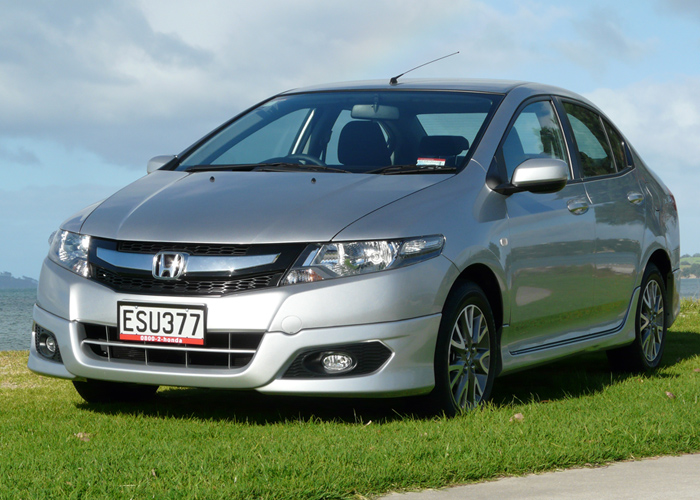
Car reviews
Read our expert car reviews - where we give insight into the latest vehicles to hit our roads.
09 February 2011
The City is built on Honda's global small car platform and is based around the Jazz with a different outer skin.

Honda customer loyalty has been put to the test in recent times and continues to be tested with the launch of the all-new third-generation Honda City. Already the industry leader in retail price increases in recent times with no discounts, they are now asking the faithful for the second time in twelve months to consider purchasing a new model without Electronic Stability Control (ESC), the one active safety device NZ authorities are aggressively educating the NZ public to adopt where possible.
The most loyal followers of the brand will argue Honda by way of their Advanced Compatibility Engineering body design already offers enhanced self-protection and ESC is a minor omission. What they can't argue however, is that enhanced body designed and multiple airbags are passive safety devices only and Stability Control or Vehicle Stability Assist (VSA) in Honda language, is a pro-active safety device designed to help avoid an accident taking place. Also hard to accept is Honda New Zealand's explanation that VSA takes a long time to develop.
Once a leader in mechanical technology Honda now finds itself lagging behind its competitors and in danger of being the only new car distributor to launch new product into the market this year without ESC.
The City is built on Honda's global small car platform and is based around the Jazz with a different outer skin. The all-new Jazz was released to the NZ public in late 2008 also without Stability Control.
It's a shame because the two main City models on offer do have lots of positives and fit perfectly into the shopping basket for those looking for a small sedan with good fuel economy, low emissions and ample interior space. For Honda NZ it could well be the perfect vehicle for those who believe a new Civic has got away from them financially or has grown too big for their needs and lifestyles.
The model range starts with a City S which is available with an option of either a 5 speed manual for $26,900 or a 5 speed automatic transmission taken from the current 1.8 litre Civic for $29,500.
Interior features include cruise control, instant fuel usage monitoring, air-conditioning and an iPod/MP3 ready single in-dash CD stereo with MP3 player compatibility. Steel 15-inch wheels including a full size spare wheel are also standard on the City S.
Upgrading to the City E increases the retail to $31,900 and adds telescopic steering, 16-inch alloy wheels (including the spare), chrome door handles, front fog lamps, sports trim, centre console armrest and a leather steering wheel and shift knob. Automatic is the only transmission option at this level.
Sports and leather options are also available with the range topping out at $35,600 for the City E Sport.
The City will win many with its frugal fuel consumption of 6.3L/100km (manual) and 6.6L/100km (auto), a figure easily achieved and exceeded by most on the press day launch. CO2 emissions of just 148g/km also make the car an environmentally sound choice. For many a quiet frugal petrol engine still has benefits over a more audible diesel. Add Road User Charges and increased registration costs to the overall running cost calculations of its diesel competitors, and the petrol powered City stacks up pretty well.
It will definitely appeal to those wanting to down size but retain interior space for the golf clubs and the like. The platform design where the petrol tank is pushed forward has allowed for a massive 506 litres of boot space, larger than any of the current Honda sedan range. The one down side is the hinging which protrudes into the boot space and is something of an antiquated design.
The rigid body design provides pleasant ride comfort, vehicle stability and noise reduction while the electric power steering compliments rather than hinders the handling characteristics of the City. Electric power steering has benefits in helping reduce fuel consumption but is often left wanting in the overall driving experience. Honda has struck a very good balance bearing in mind the overall design concept and likely driver expectation.
The City has a lot going for it but the lack of ESC in any model is a concern. While their in-house testing programme delivers a very strong car in terms of occupant safety in the event of an accident, Honda has failed to complete the package to sell a truly safe car.
It should be noted that some new car manufacturers are fitting ESC without the in-depth work going into improving body structure. Recent Australasian New Car Assessment Programme (ANCAP) testing has shown some new cars currently on the market have failed to achieve a maximum 5-star rating even though ESC is fitted.